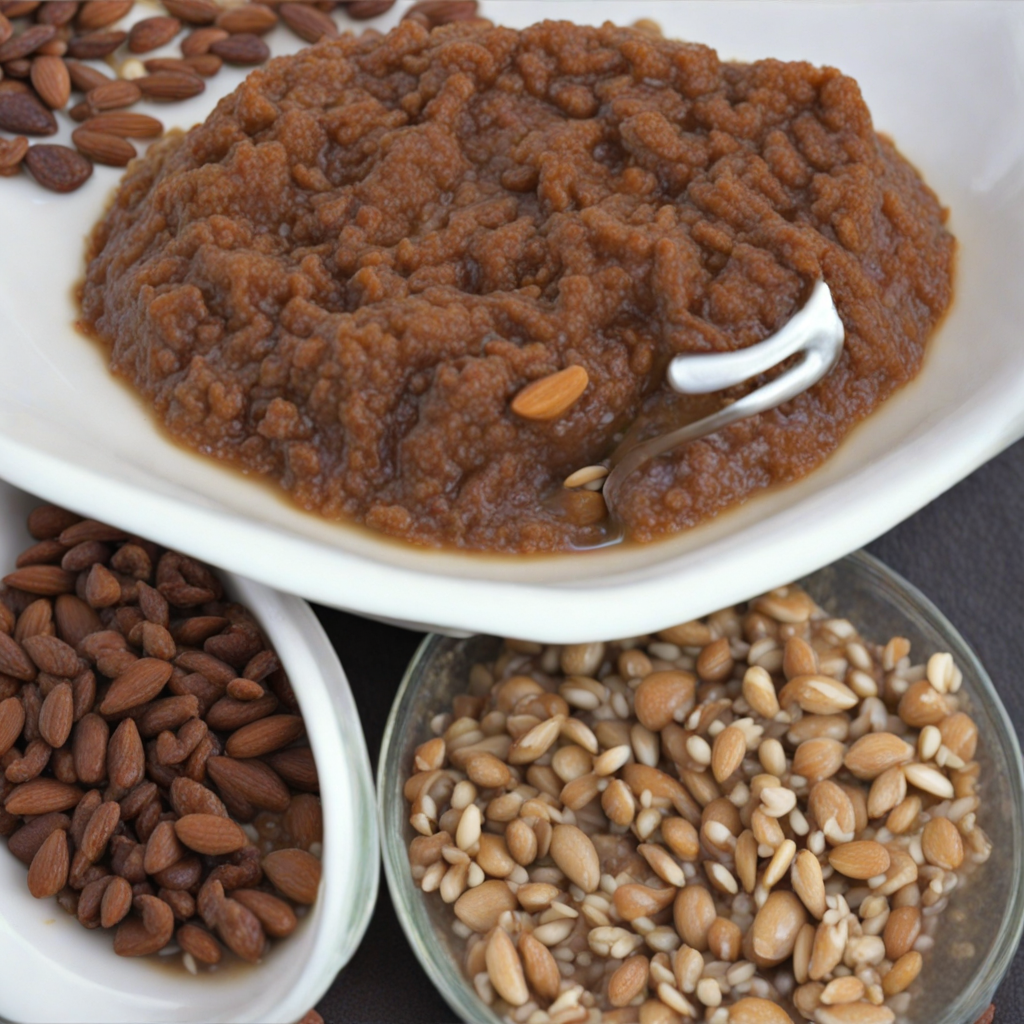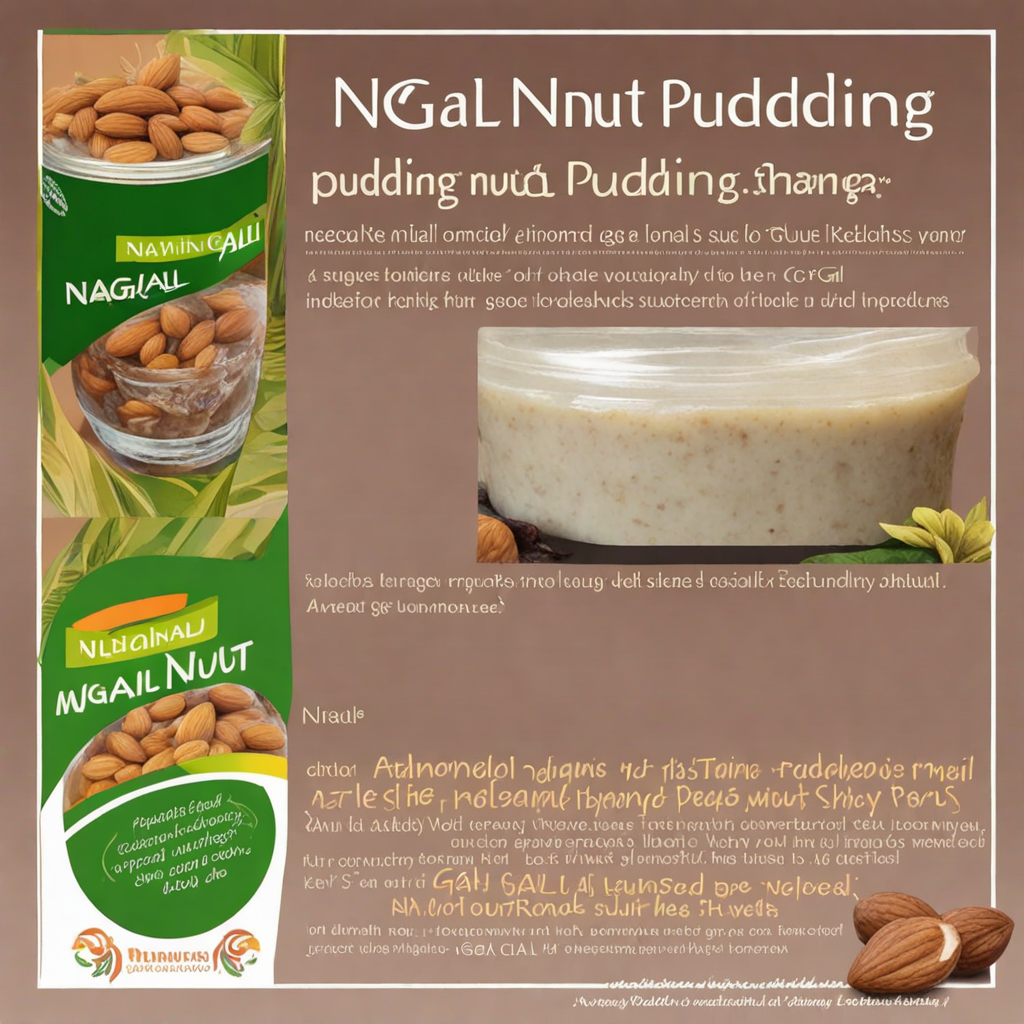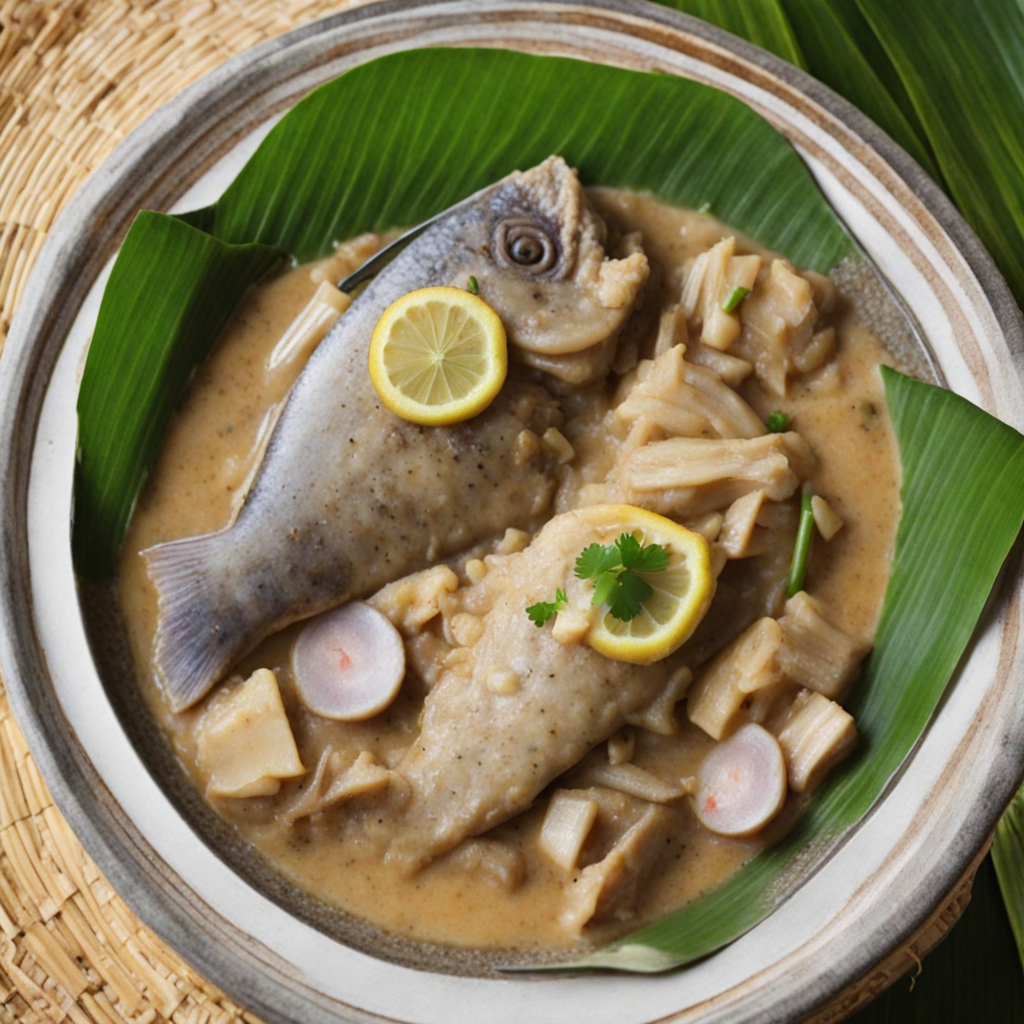Ngali Nut Pudding
Ngali Nut Pudding is a delightful and unique dessert originating from the Solomon Islands, showcasing the rich culinary traditions of the region. The pudding is primarily made from ngali nuts, which are native to the islands and are known for their rich, creamy texture and slightly sweet flavor. These nuts are carefully harvested and ground into a smooth paste, creating a base that is both nutritious and delicious. The pudding is often sweetened with local honey or sugar, enhancing its natural sweetness while maintaining a hint of earthiness that is characteristic of the ngali nut itself. To prepare Ngali Nut Pudding, the nut paste is mixed with water or coconut milk, which adds a creamy richness to the dish. The mixture is then cooked gently until it thickens, achieving a velvety consistency that is perfect for a dessert. Traditional recipes may incorporate additional ingredients such as vanilla or spices like nutmeg and cinnamon, infusing the pudding with aromatic flavors that elevate the overall experience. The result is a luscious pudding that offers a comforting and satisfying taste that reflects the island's bountiful resources. Served warm or chilled, Ngali Nut Pudding can be enjoyed on its own or paired with fresh tropical fruits, such as bananas or mangoes, for an added burst of flavor. Its versatile nature makes it a popular treat for both locals and visitors, inviting everyone to savor the essence of the Solomon Islands. This pudding not only provides a unique taste experience but also connects those who enjoy it to the rich cultural heritage of the islands, making it a must-try for anyone seeking to explore new culinary delights.
How It Became This Dish
The Engaging History of Ngali Nut Pudding from the Solomon Islands #### Origins Ngali Nut Pudding, a traditional delicacy from the Solomon Islands, is a delightful dessert that showcases the rich culinary heritage of this Pacific archipelago. The pudding is made primarily from ngali nuts, also known as Canarium indicum, which are native to the region. These nuts have been a vital part of the local diet for centuries, and their culinary potential has given rise to various traditional dishes, with pudding being one of the most cherished. Ngali nuts are typically harvested from tall trees that thrive in the tropical climate of the Solomon Islands. Indigenous peoples have long recognized the nutritional value of these nuts, utilizing them not just for their flavor, but also as a source of essential fats and proteins. The nuts were often consumed raw, roasted, or ground into pastes, marking their importance in the local diet long before the introduction of Western influences. #### Cultural Significance Ngali Nut Pudding is more than just a dessert; it is a dish steeped in cultural significance. Traditionally, the preparation and sharing of this pudding are interwoven with community gatherings, celebrations, and rites of passage. The pudding is often made during special occasions, such as weddings, festivals, and communal feasts, symbolizing unity and shared heritage. The act of making ngali nut pudding is often a communal activity. Families and friends come together to gather the nuts, prepare the pudding, and enjoy it in a festive atmosphere. This collaboration fosters a sense of community, reinforcing social bonds and passing down culinary knowledge from one generation to the next. In this way, ngali nut pudding serves not only as nourishment but as a vital link to the cultural identity of the Solomon Islands. Furthermore, the pudding embodies the indigenous belief in the spiritual connection between food, land, and people. The careful harvesting of ngali nuts acknowledges respect for nature, and the preparation of the pudding becomes a ritual that honors ancestral traditions. Each bite of ngali nut pudding is imbued with the stories and histories of those who have come before, making it a vessel of cultural memory. #### Development Over Time As the Solomon Islands encountered external influences through trade, colonization, and globalization, the development of ngali nut pudding evolved, reflecting a blend of traditional practices and new ideas. The arrival of Western settlers in the 19th century brought with it a range of new ingredients and cooking techniques, which began to alter the way locals prepared food, including ngali nut pudding. In its traditional form, ngali nut pudding was often relatively simple—consisting of mashed ngali nuts mixed with coconut milk, sweeteners like sugar or honey, and sometimes flavored with vanilla or spices. However, as the islands opened up to the world, variations of the pudding emerged. Influences from Chinese, European, and other Pacific cuisines began to intertwine with local practices, leading to new recipes that incorporated exotic fruits, different sweeteners, and even baking techniques. For instance, the introduction of flour into the region allowed for a denser, cake-like version of ngali nut pudding, which is often baked rather than steamed. This adaptation has made the pudding more versatile and accessible, allowing it to be enjoyed in various settings—from casual family dinners to formal gatherings. The globalization of food culture has also introduced ngali nut pudding to a wider audience. As tourism in the Solomon Islands has increased, local chefs and home cooks have begun to showcase traditional dishes, including ngali nut pudding, in restaurants and cooking demonstrations. This exposure has sparked interest in the pudding, prompting culinary enthusiasts to experiment with the recipe and incorporate contemporary ingredients, while still respecting its heritage. In recent years, there has also been a resurgence of interest in traditional foods, driven by a global movement towards sustainability, health, and authenticity. Ngali nuts, with their rich nutrient profile and unique flavor, are gaining recognition beyond the Solomon Islands. As health-conscious consumers seek out natural and indigenous ingredients, ngali nut pudding stands out as a nutritional powerhouse that tells a story of its origins. #### The Recipe and Modern Adaptations While traditional recipes for ngali nut pudding may vary from one household to another, the core ingredients remain consistent. The basic recipe involves the following steps: 1. Harvesting and Preparing Ngali Nuts: The nuts are gathered and usually roasted, which enhances their flavor. Once roasted, they are shelled and ground into a paste. 2. Mixing Ingredients: The ground nuts are combined with coconut milk, sweeteners such as sugar or honey, and a pinch of salt. Some recipes also include vanilla or spices for added flavor. 3. Cooking: The mixture can be either steamed in banana leaves or baked in an oven, resulting in a pudding that is both creamy and rich. As modern cooks take on the challenge of recreating ngali nut pudding, they often experiment with variations. Some incorporate local fruits, such as bananas or mangoes, into the pudding, adding both flavor and texture. Others might use alternative sweeteners like maple syrup or brown sugar, or even add a twist with spices like nutmeg or cinnamon. #### Conclusion Ngali Nut Pudding stands as a delicious testament to the cultural richness and culinary creativity of the Solomon Islands. Its journey from a traditional dish rooted in local customs to a modern delicacy enjoyed by both locals and visitors alike reflects the adaptability of food in the face of changing times. As the world increasingly turns its attention to indigenous cuisines and sustainable practices, ngali nut pudding is poised to shine, inviting everyone to savor not only its unique flavors but also the rich history and cultural significance it carries. Each bite of this pudding is a reminder of the Solomon Islands' deep connection to its land, its people, and its traditions, ensuring that this delightful dish will continue to be cherished for generations to come.
You may like
Discover local flavors from Solomon Islands







